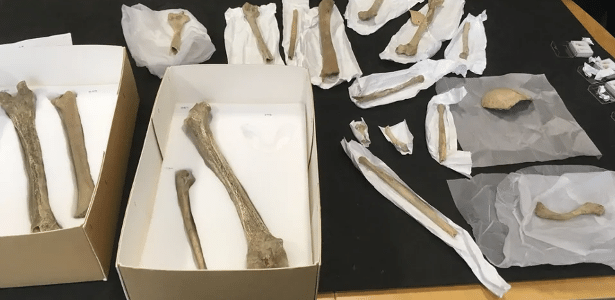Scientists studied the oldest human DNA found to date in the British Isles and discovered the presence of two distinct groups that migrated to Britain at the end of the last ice age.
Publicado na Natura Ecology and Evolution, the new study from the UCL Institute of Archeology (University College London), researchers from the Natural History Museum and the Francis Crick Institute reveal for the first time that the recolonization of Britain consisted of at least two groups with distinct origins and cultures.
The researchers explored DNA evidence from an individual found in Gough Cave in Somerset and an individual located in Kendrick Cave in North Wales who lived more than 13,500 years ago.
The study, which involved radiocarbon dating and analysis, as well as DNA extraction and sequencing, shows that useful genetic information can be obtained from some of the oldest human skeletal materials in the country.
The authors claim that these genomic sequences now represent the oldest chapter in Britain’s genetic history, but ancient DNA and proteins promise to take us even further in human history.
The researchers found that the DNA of the individual from Gough’s Cave, who died about 15,000 years ago, indicates that his ancestors were part of an early migration to northwestern Europe about 16,000 years ago.
However, the Kendrick cave individual dates from a later period, approximately 13,500 years ago, with his ancestors from a group of Western hunter-gatherers.
Scientists believe that the ancestral origins of this group come from the Near East, migrating to Britain about 14,000 years ago.
“Finding the two ancestors so close in time in Britain, just a millennium apart, is improving the emerging picture of Paleolithic Europe, which is that of a changing and dynamic population,” wrote study co-author Mateja Hajdinjak. Francis Crick Institute.
The authors note that these migrations occurred after the last ice age, when about two thirds of Britain was covered by glaciers. With the warming of the climate and the melting of glaciers, drastic ecological and environmental changes have occurred and humans have begun to return to northern Europe.
“The period we were interested in, 20 to 10,000 years ago, is part of the Paleolithic, the ancient stone age. This is an important period for the environment in Britain as there would have been significant climate warming, an increase the amount of forest and changes in the types of animals available for hunting, ”explains study co-author Sophy Charlton, who conducted the study while at the Natural History Museum.
cultural distinctions
In addition to genetically, the two groups were considered culturally distinct, with differences in what they ate and how they bury their dead.
Rhiannon Stevens of the UCL Institute of Archeology said chemical analyzes of the bones showed that individuals in Kendrick’s Cave ate many marine and freshwater foods, including large marine mammals.
The humans in Gough’s cave, on the other hand, ate mainly terrestrial herbivores such as deer, bovids (including a species of wild bovine called aurochs) and horses. “
The researchers found that the two groups’ mortuary practices were also distinct. While there were animal bones found in Kendrick’s cave, these included portable art objects such as a decorated horse’s jaw. No animal bones were found showing evidence that they were eaten by humans, and scientists say this indicates that the cave was used as a burial site by its occupants.
In contrast, animal and human bones found in Gough’s cave showed significant human modifications, including human skulls modified into “skulls,” which researchers believe to be evidence of ritual cannibalism. Individuals of this former population appear to be the same people who created the stone tools of the Magdalene, a culture also known for its iconic rock art and bone artifacts.

